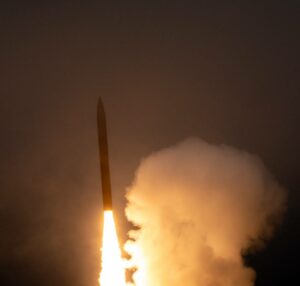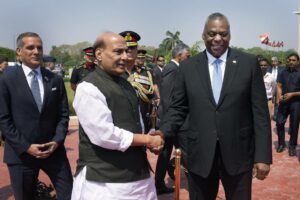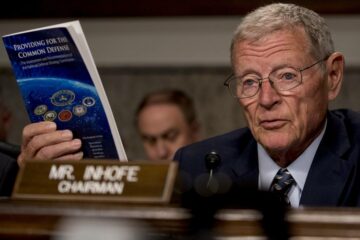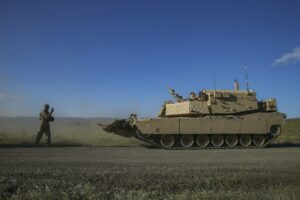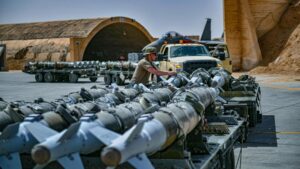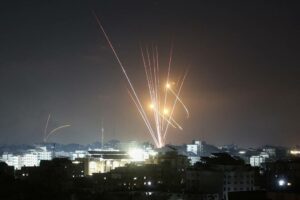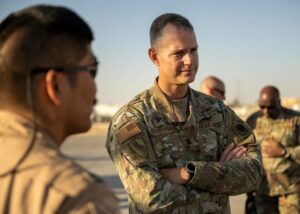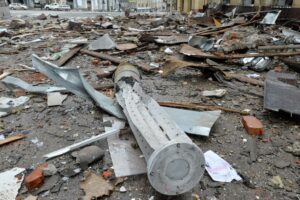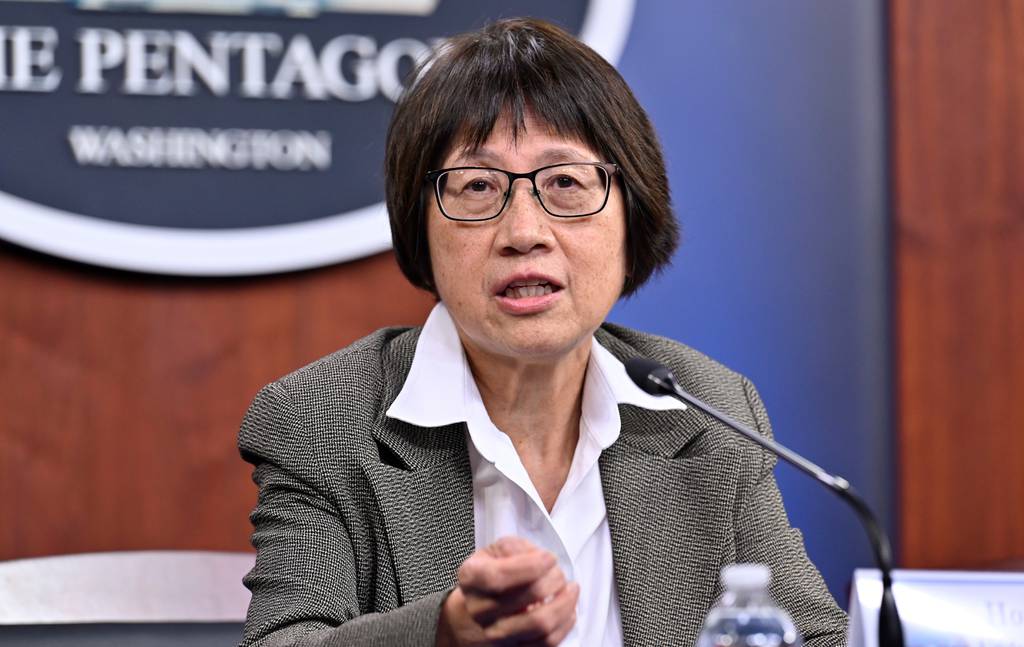
WASHINGTON — A panel of military leaders will convene this fall to decide which of the Pentagon’s joint, rapid experimentation projects should transition to the field, according to U.S. Undersecretary of Defense for Research and Engineering Heidi Shyu.
For the last two years, Shyu’s office has been leading an effort known as the Rapid Defense Experimentation Reserve, designed to address high-need capability gaps shared across the military services through intensive prototype and demonstration campaigns. Defense Department officials haven’t talked in detail about the specific prototypes being tested through RDER, but the first round of capabilities is focused on addressing long-range fire needs in the Indo-Pacific region.
Shyu told reporters Aug. 29 that after a period of testing at Camp Atterbury in Indiana and as part of U.S. INDOPACOM’s Northern Edge exercise this summer, Shyu and her team will present the top-performing systems at a deputy’s management action group, or DMAG, meeting — a panel of four-star generals that includes Pentagon leaders, service officials and combatant commanders.
“We have a list of projects that are ready to go into fielding,” she said on the sidelines of the National Defense Industrial Association’s Emerging Technologies for Defense conference going on this week in Washington.
Shyu declined to detail the projects but noted that one of the efforts is of high interest to the Army and Air Force. During the upcoming meeting, DoD leaders will determine which service should lead that project and others. They’ll also decide how many systems to buy based on how much near-term funding is available.
The Pentagon requested $687 million for RDER in its fiscal 2024 budget — nearly double the $358 million it asked for last year. Congress appropriated $272 million for the program in fiscal 2023, which ends Sept. 30, up from $34 million the previous year, for the effort, which helped the department start the first series of demonstrations.
As the department approaches its first decision point for RDER projects, Shyu said the process for identifying promising prototypes and testing them in a relevant environment has worked well. It’s also a way to bring in allies and industry partners. The first demonstration series included the United Kingdom and Australia.
“This seems to work well for RDER because a lot of planning needs to happen before you can bring all your assets to a location,” she said.
Getting capabilities in the hands of military users has also been critical, Shyu said. During the demonstrations at Camp Atterbury, for example, members of the National Guard helped test RDER prototypes, offering feedback on how the systems performed. The Northern Edge exercises that followed helped measure the prototypes’ operational utility in realistic scenarios.
Courtney Albon is C4ISRNET’s space and emerging technology reporter. She has covered the U.S. military since 2012, with a focus on the Air Force and Space Force. She has reported on some of the Defense Department’s most significant acquisition, budget and policy challenges.
- SEO Powered Content & PR Distribution. Get Amplified Today.
- PlatoData.Network Vertical Generative Ai. Empower Yourself. Access Here.
- PlatoAiStream. Web3 Intelligence. Knowledge Amplified. Access Here.
- PlatoESG. Automotive / EVs, Carbon, CleanTech, Energy, Environment, Solar, Waste Management. Access Here.
- PlatoHealth. Biotech and Clinical Trials Intelligence. Access Here.
- ChartPrime. Elevate your Trading Game with ChartPrime. Access Here.
- BlockOffsets. Modernizing Environmental Offset Ownership. Access Here.
- Source: https://www.defensenews.com/battlefield-tech/2023/08/29/four-star-panel-to-weigh-in-on-pentagons-rapid-experiment-projects/
- :has
- :is
- $UP
- 10
- 2012
- 2023
- 2024
- 29
- 30
- 70
- a
- About
- According
- acquisition
- across
- Action
- address
- addressing
- After
- AIR
- Air Force
- All
- also
- an
- and
- approaches
- ARE
- Army
- AS
- Assets
- At
- Aug
- Australia
- available
- based
- because
- been
- before
- being
- bring
- budget
- but
- buy
- Camp
- Campaigns
- CAN
- capabilities
- capability
- challenges
- Conference
- Congress
- covered
- critical
- decide
- decision
- Defense
- Defense Department
- Department
- designed
- detail
- Determine
- DoD
- double
- during
- Edge
- effort
- efforts
- emerging
- emerging technologies
- Emerging Technology
- ends
- Engineering
- Environment
- example
- Exercise
- experiments
- Fall
- feedback
- field
- Fire
- First
- Fiscal
- Focus
- focused
- followed
- For
- Force
- from
- funding
- gaps
- Go
- going
- Group
- Guard
- Hands
- happen
- Have
- helped
- her
- High
- How
- HTTPS
- identifying
- images
- in
- included
- includes
- Indiana
- industrial
- industry
- industry partners
- interest
- into
- IT
- ITS
- joint
- jpg
- Kingdom
- known
- Last
- Last Year
- lead
- leaders
- leading
- List
- location
- Lot
- management
- many
- measure
- meeting
- Members
- Military
- million
- most
- much
- National
- nearly
- needs
- noted
- of
- offering
- Office
- officials
- on
- ONE
- operational
- or
- Others
- panel
- part
- partners
- pentagon
- performed
- period
- planning
- plato
- Plato Data Intelligence
- PlatoData
- Point
- policy
- present
- previous
- process
- Program
- project
- projects
- promising
- prototype
- prototypes
- rapid
- ready
- realistic
- region
- relevant
- Reported
- reporter
- research
- Reserve
- round
- s
- Said
- scenarios
- seems
- Series
- service
- Services
- shared
- she
- should
- significant
- since
- some
- Space
- Space Force
- specific
- start
- Systems
- team
- Technologies
- Technology
- test
- tested
- Testing
- that
- The
- The Projects
- the United Kingdom
- Them
- this
- this week
- Through
- to
- transition
- two
- u.s.
- United
- United Kingdom
- upcoming
- users
- utility
- washington
- Way..
- week
- weigh
- WELL
- which
- will
- with
- Work
- worked
- year
- years
- you
- Your
- zephyrnet

